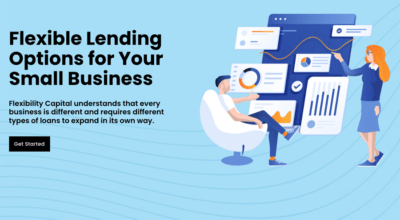
The greatest poison in your local economy and mine is the fluctuating medium of exchange known as the paper dollar and the excesses it engenders, starting with the greatest one of all, the American federal government. If it were not for the government in Washington, D.C., and its tens of thousands of financial hangers-on and dependents and all the free money they consume, we could have a prosperous local economy. Chattanooga, my hometown, would have a right future, given the genius of its people and their goodwill.
Instead, we are constantly under temptation. We are tempted not to care for our neighbor, not to invest in real assets, not to work hard and not to save our dollars for future troubles. Instead, we are driven to consumption, heavy borrowing, passivity before national government’s great oracles, subservience to its policing and fear of the future that creeps into the heart of every dependent.
It is a mix of hubris and fear that keeps us bound to the fractional reserve economy. We remain confident our deposit guarantor, the FDIC, which appears to have liquidated its balance sheet to “save” Silicon Valley Bank’s depositors at 100 percent. And we tremble in fear, staying in the system and unwilling to strike out on our own among hard assets in local economy. — DJT
By Daniel Oliver / Myrmikan Capital, LLC (doliver@myrmikan.com, Tel. (646) 797-3134)
From July through December 2021, the average fixed rate for a 30-year mortgage hovered around 3%. Most home owners locked in this gift from the Federal Reserve. The low rates triggered manic building and bubble pricing, as they always do—but, unlike the bubble of the 2000s, 92% of new mortgages were fixed rate: rising interest rates became more threatening to lenders than to borrowers.
The Fed began hiking rates twelve months ago, and the question became: on which balance sheets did the massive interest rate liability lie? Not those of the issuers: ever more mortgages were issued by non-bank lenders who accessed capital through 15-day facilities from money-center banks. Terms were so short because mortgages were flipped immediately to Fannie Mae and the other quasi-government agencies. The agencies did not bear the risk because they securitized the mortgages and issued MBSs to banks and other investors. Large, money-center banks bought MBSs but tend to have a significant amount of variable interest income from credit cards, business loans, and loans to other institutions. They also aggressively hedge rate risk and tend to buy the highest securitization tranches with the shortest maturities. Who was left with the interest rate exposure, either directly or as counter-parties to hedging transactions? Insurance companies, pension funds, shadow banks, and small banks.
Many have been surprised that nothing in the financial system had broken as rates shot dramatically higher. Myrmikan did recently observe that FTX, an obvious fraud, had managed to stagger on for six months after the Luna collapse ignited the cryptocontagion—a proper bank ought to be able to survive a lot longer than that, especially since rates did not even break 3% until October.
A lot longer turned out to be four months. If the first casualty of higher rates was an outright fraud, the next would be in the venture industry, which is the marginal user of capital. The Fed’s money printing blitz during the COVID hysteria sent the cost of capital back into sharply negative territory. At zero discount rates, payments in the future are worth the same as cash in the present. This absurd phenomenon favored especially projects with large capital needs and prospective cash flows in the distant future, the kind of company in which Silicon Valley specializes.
SVB Financial Group was banker to the Silicon Valley start-up industry and captured a large portion of venture-bound funds, with deposits soaring from $62 billion at the end of 2019 to $173 billion by the end of 2022. The bank attracted these cash balances in part because it offered founders special perks. Its website still advertises: “We offer financing to accommodate: Private aircraft financing; Ownership stake in a private or public company; Ownership in Venture Capital or Private Equity fund.”
SVB’s balance sheet includes $9 billion of loans against private residences, $9 billion backed by income
from “innovation sector” business loans, and $1.6 billion against “premium wine.” Founders who took advantage of these perks were required to maintain their corporate cash balances at SVB. Whereas individuals rarely hold more than the $250,000 balance covered by FDIC insurance, corporations hold millions to fund working capital and, in the case of venture companies, to hold their development capital. As a result, of the $173 billion in deposits, $165 billion were uninsured.
In the typical bubble narrative, it would have been SVB’s willingness to lend against overvalued, illiquid collateral that would have pushed it into bankruptcy: its borrowers would have defaulted one by one as the economic cycle turned, slowly building pressure on its balance sheet, until first one and then another creditor withdrew funding. That was the story of 2008. But in this story, the culprit was the bond portfolio.
The sudden influx of deposits from the Fed’s QE had given SVB little time to look for loans, so they used the funds to buy bonds instead. As of the end of 2022, SVB held $117 billion in securities, mostly securitized mortgages purchased from quasi-government agencies (like Fannie Mae).
These are AAA rated bonds with virtually no default risk, the kind of investments that regulators want banks to own. SVB held its securities in two buckets: available for sale (AFS) and held to maturity (HTM). These characterizations were invented by the Financial Accounting Standards Board in 2009 under direct pressure from Congress. During the 2008 panic, money market funds and banks became forced sellers of bonds, pushing prices lower, triggering more margin calls and more selling. Congress had passed a law requiring the Federal Reserve to study the effects of mark-to-market accounting “due to concerns that such write-downs were the result of inactive, illiquid, or irrational markets.”
Under the new rules, as long “it is more likely than not [the bank] will not have to sell the security before recovery of its costs basis,” banks are permitted to value bonds at cost for regulatory purposes, ignoring fair market value. Whatever the wisdom of this policy during a financial panic, it makes no sense in the current situation, in which bonds have fallen in price not because of a liquidity panic but because the Fed has raised interest rates rapidly and has been boasting that they will keep rates higher for longer to contain inflation.
The Fed’s rapid tightening of financial conditions sharply curtailed the market’s appetite to fund venture companies: shrinking money supply reduces the quantity of available dollars, and higher interest rates entices capital in other directions. SVB began to see deposits fall as its customers spent their development dollars, requiring it to raise liquidity. On Wednesday, March 8, the bank announced a $21 billion sale of AFS securities in which it realized a loss of $1.8 billion “after-tax” (the assumption being that the loss would reduce income taxes—but, of course, there will be no income taxes this year). The bank also announced plans to plug the capital hole by raising $1.75 billion in equity.

